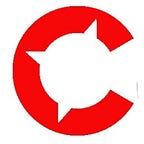How We Operate Our Data Science Team at CompassRed
At CompassRed we help companies navigate the data landscape. It’s a challenging environment, with change being one of the few constants. On behalf of our clients we use billions of data points and artificial intelligence to uncover insights, automate internal processes, and predict future outcomes. Often, we’re asked how we operate our team. First, here are a few of our beliefs and goals.
What We Believe
We believe that data and technology can move mountains
To make this a reality, we begin projects working with our clients to make sure we quickly get up to speed on the current state of their business, and help shine a light on the highest value uses for their data. We begin with the end in mind, and align our working team with to clear objectives. Sounds simple, but it’s critical. You’d be surprised how many people try to skip this step and get right to the tech and data.
We believe small teams can do more
Sure, we’ve managed global integrations and roll-outs, and all of the stakeholders that come along with that. But consistently, as we look to deliver the highest value for our clients, we’ve found that our best approach is to bring together a small team of data scientists, data engineers and technologists. A smaller team drives accountability. We use the least amount of people staffed to a project as possible, and pull in SME’s (subject matter experts) and additional bandwidth as needed.
We believe in collaboration
Our modern work world allows our team members to work from anywhere. Balance wins the day for us with remote vs on-site. There certainly is no substitute for in-person interactions and the productivity that comes from having the team all in one place. Peer review is incredibly important for quality assurance, but it’s just as important for learning, knowledge transfer and pushing our team to improve.
We also believe in headphones
Certain steps in the Data Science process (like feature engineering and coding a new model) require great concentration. That means respect the headphones, and be happy when a colleague locks themselves in a small conference room to avoid interruptions.
Our process
Over the past few years, we’ve pushed ourselves to make each project better than the last. We’ve found that an iterative approach is most effective. It’s better to show partial work product sooner, than to keep a client waiting until “the work is done” or “is perfect”.
We avoid the black box
Transparency into our work process drives both a better work product, and happier client partners. Black box isn’t something to guard or treasure, it’s something we try to avoid. We use a CompassRed modified version of the “CRISP-DM” or Cross industry standard process for data mining. We’ve made adjustments to the CRISP-DM in ways that help us deliver better for our clients, and deliver against the domain specific challenges we’re working on.
We make it simple
We attempt to explain our work in terms that are as simple as possible. If you can’t explain it simply, you don’t understand it enough. You can always give a more complex explanation, but most times non-statistical or non-technical people won’t ask the question, and will come away from the interaction unsatisfied. We try to make it easy for our business partners to make great business decisions. We don’t try to impress them with technical language.
We own our mistakes
Nobody is perfect, sometimes we misinterpret a column name or don’t have the right business context. Our iterative and transparent process allows us to show our thinking, and also makes diagnosing and fixing an error much easier.
We keep it agile
We run our projects in an agile manner. That includes a LOT of sticky notes, a kanban board, and daily standup meetings. Some of our clients are managing projects in a waterfall manner, we manage to survive that. With almost every project, we improve some part of our game. Each project is a chance to innovate. That can mean fewer steps, faster time to results, lower costs, etc.
We love new methods, new algorithms and new tools
A brief mention of our toolset. In general, we pick the best tool for the job, which means what’s right for the client. We have to think through ramp up, internal employee skills, license and full ownership cost, etc. We use enterprise grade when that is appropriate, low cost when it’s the right tool, and we especially like open source because it usually wins on all fronts these days. We geek out on this too often, and will devote a future post to this in detail. It’ll have words like Slack, Tableau, R, Python, SQL, Git, Azure, AWS, google docs, etc, etc.
We believe successful employees are passionate about more than just their day jobs
We encourage side projects, analyses, science projects and more. We encourage our team to share their knowledge, share about the things they’re invested in and encourage their passion for all things data. It helps us all grow personally, and helps us grow the community.
